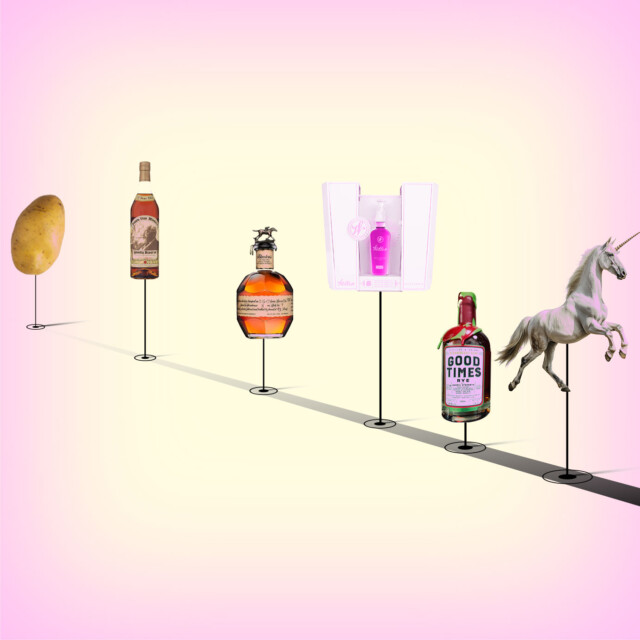As far as I know, no one has ever definitively determined the etymology of the word “tater” as it applies to the bourbon industry.
Surely, it must have originated on straightbourbon.com, the first widespread online forum for discussing bourbon topics, both important and ridiculous. Or maybe it came from a private Facebook bourbon group, those long-standing battlegrounds for shit-talking, trolling, and occasional whiskey talk. Some claim the term started as a prank that simply spun out of control. While others say the mystery man who coined the term has unfortunately passed, and the reason he initially started using the term has gone with him.
Whatever the case, it was sometime before 2010 when, for reasons unknown, the online bourbon cognoscenti started taunting those lesser-than-them neophyte drinkers who did cringeworthy things… as f*cking potatoes. Taters.
A decade and a half later the term has become both ubiquitous and meaningless. Everyone who loves bourbon a little too much is a tater. No one is a tater. The bourbon industry is “dying” — who even cares who’s a tater any more?
Well, I suppose I do, because as we near the end of the bourbon renaissance’s glory days, the timeline of the tater mirrors the history of a good thing altered, mainstreamed, and perhaps even ruined by a certain portion of its own rabid fanbase.
The Tater Is IDed
The absolute earliest online appearance of the term “tater” I can find is a 2008 straightbourbon.com thread. And there’s no way this is the first-ever appearance as fellow posters already seem somewhat familiar with the term. What is interesting, however, is that with this early mention — in a fairly serious thread offering tasting notes during a virtual blind tasting — the terms “tater” and “guru” are used interchangeably. Was the ur-tater seen as a part of an intelligentsia that simply cared and knew a bit more about the earliest bottles of the day? If so, that wouldn’t last long, and the term would quickly become derisive.
Everything Is Pappy
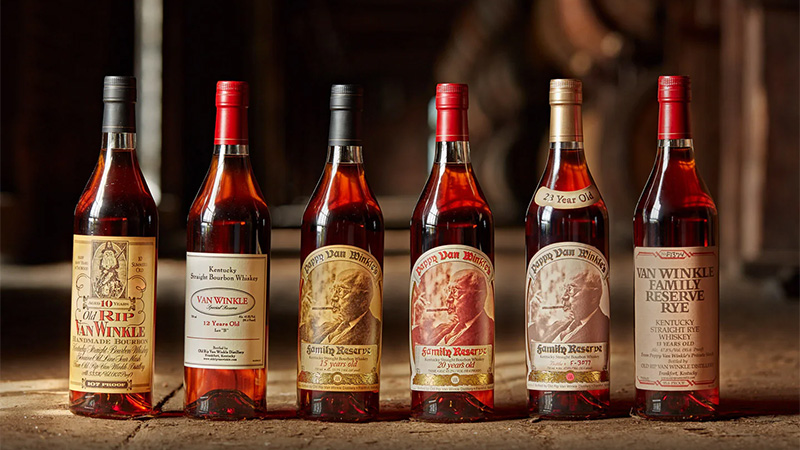
For taters to even exist, there first needed to be something for them to covet, to fetishize, to overspend on. Initially, that would mean “Pappy.” Although on shelves as early as 1994 — when the Pappy Van Winkle 20-year-old Family Reserve was first released for a mere $80 — it would take until around 2012 for it to become a unicorn, fueled by a string of glowing articles, appearances on TV shows like “Justified,” movies like “Crazy, Stupid, Love,” and touted by culinary celebrities like Sean Brock and Anthony Bourdain. When finding Pappy 15-, 20-, and 23-Year-Old became impossible, all Van Winkles, including younger offerings like Old Rip Van Winkle 10 Year and Van Winkle Special Reserve 12 Year Lot “B” also became “Pappy” to the taters.
Blue Book It
Bourbon had always been an everyman’s drink, and distilleries once priced it that way. But taters were willing to pay a lot more than the meager MSRP distilleries set their bottles at. So what was an $80 MSRP George T. Stagg actually “worth”? Sensing a need for transparency, two bourbon price guides — Bourbon Blue Book and Bottle Blue Book — were launched in 2014 to track prices based on recent gray market sales trends.
Private Parts
With the earliest taters needing bottles of Pappy, and not enough of them to go around, a secondary market emerged. This first occurred on platforms like eBay and Craigslist, both of which would eventually ban the practice of reselling alcohol. Ultimately, the gray market would move to Facebook where, thanks to the introduction of private groups in late 2010, communities with names like Strong Water Showcase and BSM (Bourbon Secondary Market) would fill the void and act as a bottle bazaar. In these online spots, among endless posts full of crass, inside jokes and often-indecipherable acronyms, bottles of Pappy (and other allocated releases) soon started selling for closer to their true market value.
If I Was a Poor Man
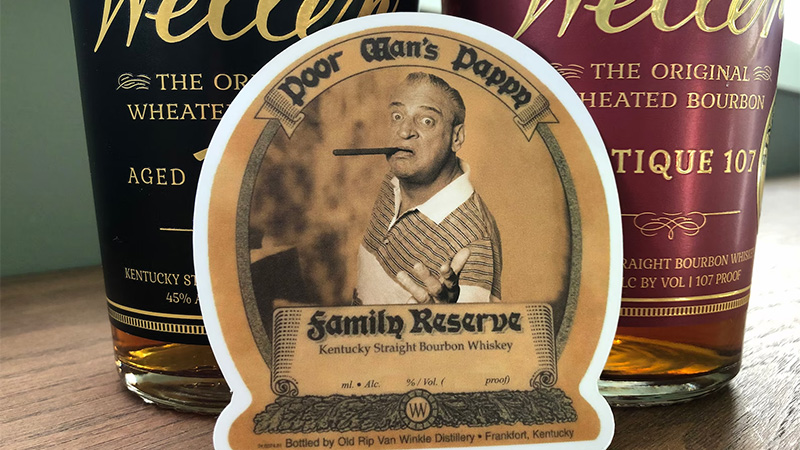
For a while, if it wasn’t Pappy, it was shit. So the taters began trying to figure ways to alchemize non-Pappy into Pappy. Notably, there was a home blend of Old Weller Antique 107 and Weller 12 Year, once mid-tier bourbons with twist-off plastic caps, which together became known as “Poor Man’s Pappy.” Though not created by him, the blend first gained popularity courtesy of Blake Riber’s Bourbonr blog, circa 2013. An entire cottage industry of Poor Man’s Pappy craftery sprung up, with goofy labels sold on Etsy. A surefire sign of a new tater in the late 2010s was him or her going on Facebook or Reddit to ask for the “recipe” (60 percent 107 to 40 percent 12 Year and, no, it didn’t even really taste like Pappy.) Eventually I published it in my 2018 book “Hacking Whiskey,” which, for better or worse, became a sort of “Anarchist Cookbook” for taters new to the scene.
Tater Season Premieres
By 2015, the start of fall had been dubbed “Tater Season.” This was the time of year when, not just Pappy, but every distillery’s LEs (limited editions) were released to market. These included such bottles as the Buffalo Trace Antique Collection (first released in 2000), Old Forester’s Birthday Bourbon (2002), Heaven Hill’s Parker’s Heritage Collection (2007), and Four Roses Limited Edition Small Batch (2008), all typically released in quantities of less than 20,000 bottles, all virtually impossible to find “in the wild” post-2015. Some bottles were consumed, while most acquisitions were just flexed online, only to be sold to another tater for a small profit.
Tater TED Talks
In 2016, at the Bar Institute, a bartender trade show in Baltimore, longtime bourbon collector and Louisville bar owner Matthew Landan presented a seminar titled “Underground Whiskey: How to Navigate the Collector’s Market for Fun and Profit.” Mere hours after that presentation, Facebook shut down all the private bourbon groups for the first time ever, and Landan became the tater’s odium populi. Landan claimed it was a mere coincidence, and two days later, bourbon’s Facebook groups were reinstated.
Line Life

Eventually this madness led to taters literally camping out at stores and distilleries to score allocated bottles. The watershed event would be a 2016 release where over 1,000 people queued at a Liquor Barn in Kentucky — many for at least 48 hours — in the mere hope of scoring some Pappy.
The Tater Is Codified
By 2017, a tater was no longer just something you only knew when you saw them — it was now a person who met very specific criteria. So specific, in fact, that late that year, bourbon aficionado and a self-proclaimed tater Wade Woodard launched his Tater-Talk blog. He kicked it off with a Google Doc listing numerous traits that define a tater, such as #9, “Refer to anything Van Winkle or from Stitzel-Weller as ‘Pappy,’” and #15, “Camp out overnight for any allocated whiskey.” The ongoing list now sits at 98 different tater attributes.
To Infinity and… That’s About It
The popularity of Poor Man’s Pappy, along with the increasing difficulty of finding “real” “Pappy” and other allocated bottles on shelves, led taters to experiment with their own home blends. A few became tater unicorns in their own right, most notably California Gold, an illicit homemade mixture that captured the tater’s imagination like few others — and which newbies to the scene still slide into my DMs to inquire if I can get them some. There were also infinity bottles — never-ending home blends in which one continually added an ounce or so from each bottle in their collection, and a sure marker of a tater if they were to excitedly discuss it online.
Henry McTater
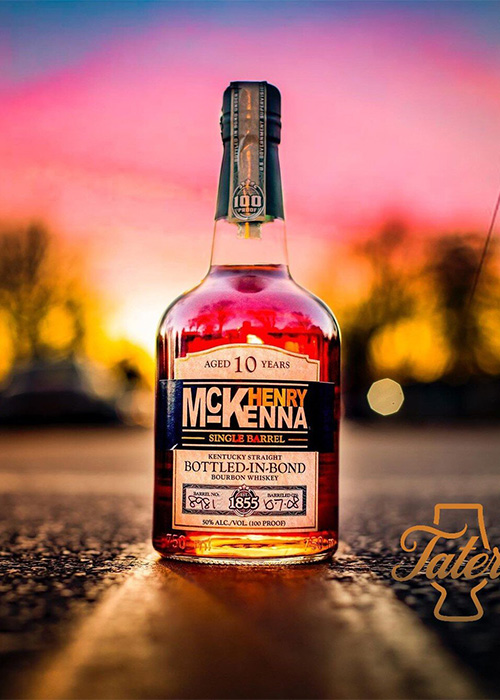
In 2018, Henry McKenna 10-Year-Old won Best Bourbon at the prestigious San Francisco World Spirits Competition (SFWSC). Previously a little-discussed, $30 shelf bourbon from Heaven Hill, this award suddenly put it on every tater’s radar, and they began scooping up bottles in earnest. When it followed 2018’s success by winning Best in Show for whiskey at SFWSC 2019, McKenna was officially McTater, never to be seen at a fair price again.
“The Pappy of…”
At a certain point, taters began spreading their fervor to other spirits categories. If they couldn’t have Pappy Van Winkle, then perhaps they could have the “Pappy of” every other spirit. There was the Pappy of rum (Foursquare), the Pappy of tequila (Fortaleza, or maybe Tears of Llorona), the Pappy of Armagnac (L’Encantada — I think I wrote that article), and even the Pappy of, uh, Scotch (Port Ellen — whatever). These all became tater bait and many remain tough to find and exceedingly expensive, vexing to true fans of these spirits categories.
Sticker Up
As single barrel mania took over the scene in the mid-2010s, private bourbon groups with names like Beast Masters Club and TC5 decided to take things one step further in differentiating their “picks” from other groups. Instead of using the distillery’s simple, mundane labeling and hang tags, these groups began designing and adorning their bottles with cartoonish stickers and decals. When one of the earliest examples, 2015’s Goykh Smash!, a Four Roses bottle featuring the Incredible Hulk punching through rocks, became a secondary-market sensation, every group began to follow suit in hopes of creating their own Insta-uncorns. Quite quickly, these “tater stickers” (as they had become known) spun out of control, with bad art, IP infringement, political rage-baiting, and straight-up lewdness. By 2021, Buffalo Trace, Four Roses, and other distilleries had begun forcing barrel-pick participants to sign an “Agreement of Non-Mutilation of Brand Packaging.”
Crotch Shooting
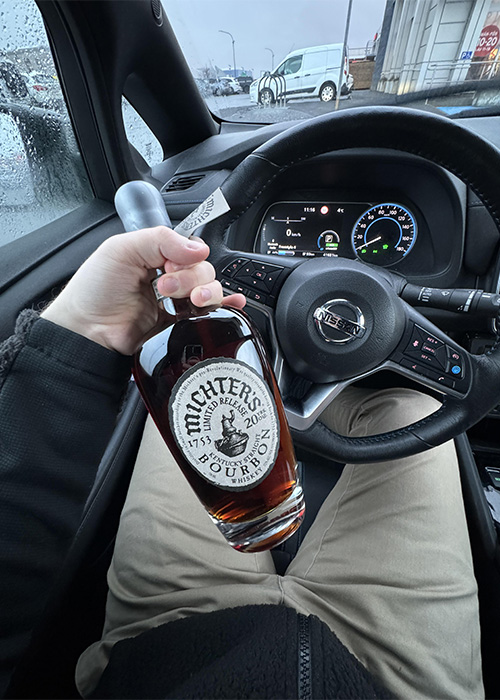
To score a rare bottle was never enough for the tater — you had to let every other tater know about it. And the most common way to do that was to take a picture of the bottle while sitting in your car, just outside the liquor store, the “score” between your legs and in front of your steering wheel. The crotch shot, as it became known, was seen as tasteless braggadocio at best, anti-inclusive machismo at worst. By 2018, many bourbon groups took to banning the practice, though, unfortunately, it still lives on today, if somewhat ironically.
Double Eagle Very Absurd
Tater-dom was hitting a fever pitch by 2019 and the “White Album” of the genre would be released that February in the form of Buffalo Trace’s Double Eagle Very Rare, a $2,000 crystal decanter of booze that I thought was surely a prank release upon first hearing the ridiculous name. The same taters that decried the shameless tater baiting and money grabbing also pursued it — or at least tried to to talk bartenders into letting them get a photo of a bottle to flex. By 2023 there was the $10,000 Eagle Rare 25, tater ad absurdum.
A Secondary Collapse
On June 13, 2019, Facebook yet again shut down all secondary-market bourbon groups — notably BSM, which by then counted 55,000 members — citing violations of its policies on the sale of alcohol and other regulated goods (cigar groups were also shuttered). This unexpected crackdown scared many taters, pushing more of the avid buyers and sellers to WhatsApp chains and MeWe (say what?!) groups. For the most part, secondary-market groups have returned to Facebook, their goings-on now better shrouded in acronyms and emojis.
Uh… Blanton’s???
By the start of the pandemic, taters had run out of true unicorns to collect. And thus, Blanton’s — a reliable shelf stable since the 1980s — was suddenly elevated to one. Maybe it was its status as the world’s first mainstream single barrel bottling, perhaps it was its handsome packaging (many taters start collecting the horsey toppers, too), surely it was partly due to it being birthed at Buffalo Trace just like Pappy; but whatever the case, Blanton’s suddenly became impossible to find. (Super taters would even search for certain “dump dates” to honor their progeny.)
Weller-fication
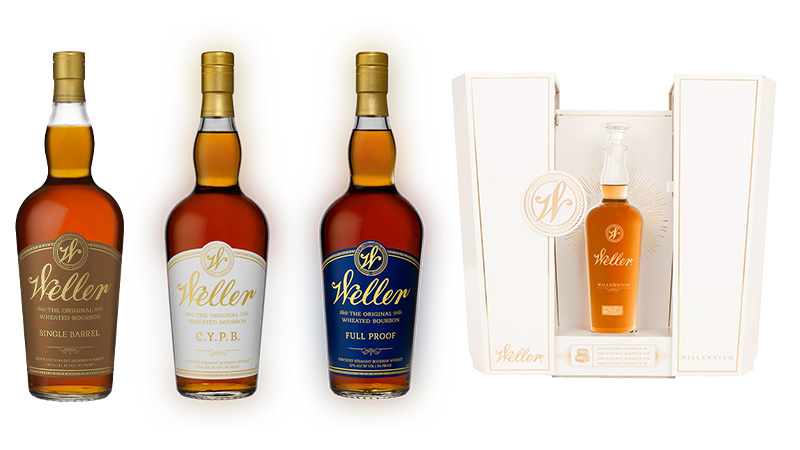
At some point Buffalo Trace (and parent company Sazerac) must have realized that instead of letting the taters struggle to find their bottles, maybe they should just start making new products specifically for them. Being that Sazerac didn’t completely own or control the Van Winkles or Blanton’s (still tied up with Japanese company Takara Shuzo International), using its humble Weller product line for this endeavor made the most sense. There was soon Weller C.Y.P.B. (Craft Your Perfect Bourbon, first released in 2018), Weller Full Proof (2019), and Weller Single Barrel (2020). I would have thought 2023’s Daniel Weller at $499.99 a bottle would have jumped the tater shark, but then came 2024’s Weller Millennium at $7,500 a bottle.
Up in Smoke Wagon
Deep into the pandemic, the tater had fully become an online creature, scouring the internet for new brands to worship. Anything Buffalo Trace was, by now, a unicorn; so taters started stanning small upstarts like Rare Character, Nashville Barrel Company, and Smoke Wagon, a Nevada-based bottler of sourced bourbon in ostentatious glass packaging, with criss-crossing six shooters embossed on a recessed silver dollar, and a motto in Latin reading “Bibamus Moriendum Est” (“Death is inevitable, let us drink”). A cult of taters spun off into a sect surrounding Smoke Wagon’s influencer owner Aaron Chepenik, a charismatic figure often pictured shirtless in his Las Vegas swimming pool, wearing a cowboy hat and aviators, and smoking a fat stogie.
Good Times, Bad Times
If you were a tater who got in so late to the game that you could no longer find rare bourbon, eventually you had no choice but to start making it yourself — in the form of more and more out-there finishes. The most taterific purveyor of the trend was a brand called Good Times Bourbon, launched during the pandemic, which made its bones with truly insane finishes: peach brandy, wildflower honey, caramel syrup. Were they truly finishing these bourbons — who has ever seen a barrel-aged strawberry kiwi brandy?! — or just adding artificial syrups to the spirit? It didn’t matter. Taters couldn’t help themselves, and the more insane the Good Times release, the crazier the secondary-market prices.
Tater Baiting
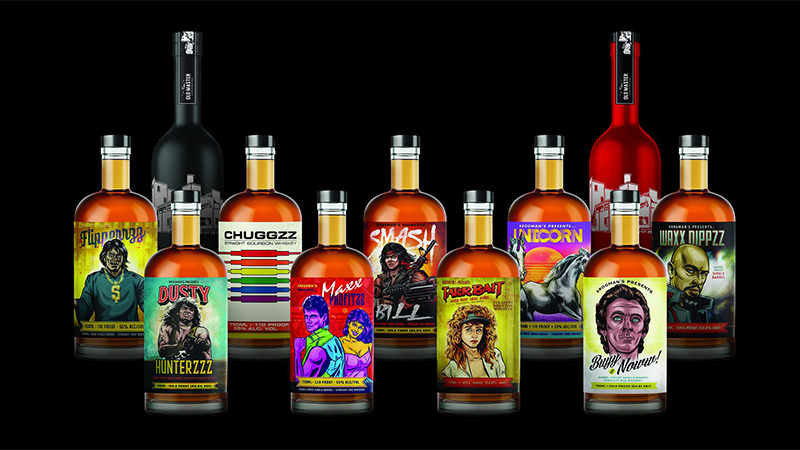
By 2020 the tater had become self-aware. In a way, that only made it easier for brands to sell to him. Such was the case for one industrious entrepreneur, Matthew Colglazier, a longtime liquor merchandiser and marketer, who released a set of nine single barrels — one for each of MGP’s nine mash bills at the time — each designed to troll the tater. One bottle was called Tater Bait, another Flipperzz (referring to people who buy allocated bottles at retail costs only to immediately “flip” them for secondary market rates), and yet another, Unicorn. No surprise, the taters went crazy for the set, and it sold briskly.
Neckin’
For many taters-come-lately, they were so new to the scene that they didn’t have much to discuss online besides trying to find bottles. Thus, arguments would arise over made-up minutiae. This was best encapsulated by the insane belief, first coming to a head in 2021, that the initial pour from a freshly cracked bottle isn’t going to be good — like, scientifically. The “neck pour,” as it was known, and those who truly believed in it, quickly became an identifier of those who had gotten too deep into taterdom.
The Taters Will Save Us
It can be easy to think the bourbon industry is in its final days — market saturation, widespread layoffs, distilleries shuttering, secondary prices collapsing, and zillenials opting for fancy sodas instead of brown water. But the tater might ironically be the one to save bourbon, refusing to yield to the very thing that has defined him for years. In fact, just last month Buffalo Trace received label approval for an Eagle Rare 30 Year Old. It immediately dominated bourbon discussion online for the day. As one tater joked on Facebook, “I’m already in line.”
